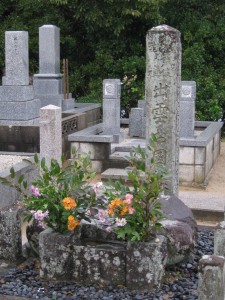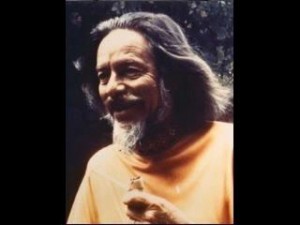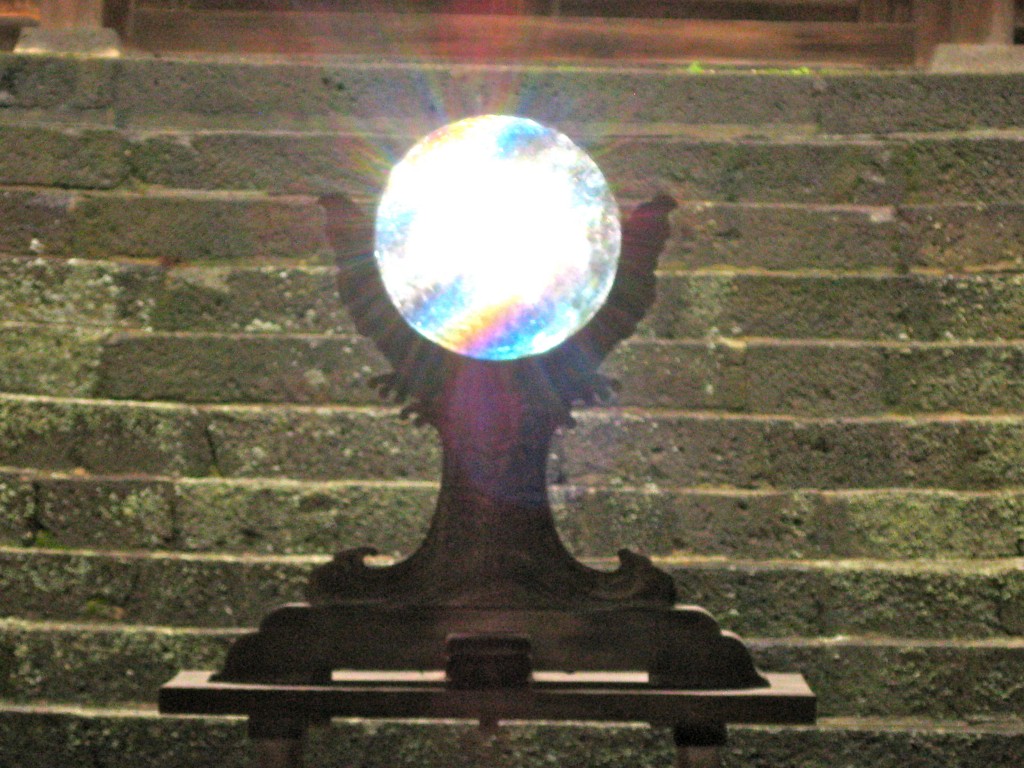Death is often cited as a prime reason why people turn to religion. The consolation of an afterlife is attractive to many, and fear of rotting or burning in hell haunts others.

Grave of Izumo no Okuni, founder of Kabuki and once miko at Izumo Taisha, now part of an amorphous kami-hood.
Shinto is pretty relaxed about the afterlife because we all become kami. There’s no good or bad, and no one to judge us. Even Class A war criminals get to be kami.
Generally speaking, ancestral spirits retain their individuality for two or three generations in the minds of their descendants, before merging into some undefined pool of common ancestry. Perhaps it represents the lifeforce, for ancestral spirits also turn into forces of nature – a shamaness became Amaterasu, spirit of the sun; Sugiwara no Michizane became Tenjin, spirit of the sky. Kamo Wake-ikazuchi, grandson of the Kamo clan founder, died as a child and apotheosised as a thunder deity.
My Irish friend and I were speculating the other day about the curious way atoms mysteriously come together to form us in miraculous fashion before dispersing as our bodies decay after death. Perhaps there’s a sense of that in the Shinto notion of ancestral spirits turning into forces of nature.
Alan Watts, however, in his latest broadcast has another take on the matter. (For his biweekly podcast, click here.) It’s all to do with nothingness. Or rather No Thing-ness.

The non-guru Alan Watts, now enjoying no-thing-ness (courtesy stageview.com)
Life is like a star shining out of the black hole of space, he says. And what we don’t realise is that space is more fundamental than the star. We never consider the matter, because it’s like trying to look at your own head – you can’t see it. And yet the head is that out of which we see in exactly the same way that the blackness is that out of which the star shines. So in similar manner nothingness is the substance that sustains human existence.
So what’s it going to be like after we die? It’s going to be as if we had never existed at all. Or as if nothing had ever existed at all. There never was anything, and there’s no one to regret it. It will all just stop. Yet you can’t have a stop without a start. But there was no start. There’s just no thing. And when you come to think of it, says Watts, that’s exactly the way it was before you were born.
Belief in no thing is not for Watts a declaration of atheism, but one of profound trust. Images of God are simply demonstrations of a lack of faith, something to hold onto, something to grasp. But letting go is a matter of trust. Letting go of idols is another way to relate to the ineffable mystery that is life and no thing-ness. And when you do so, you find that the universe is you.
Look deep in the mirror and what do you see…

The circular Shinto mirror that ends where it begins

Interesting post. To dissolve into that Nothingness is the ultimate goal of Hinduism. We call it moksha. To become ‘nothing’, the Hindu scriptures say, we must let go of everything. Even the idea of gods and religion. Because they too are just products of our minds !